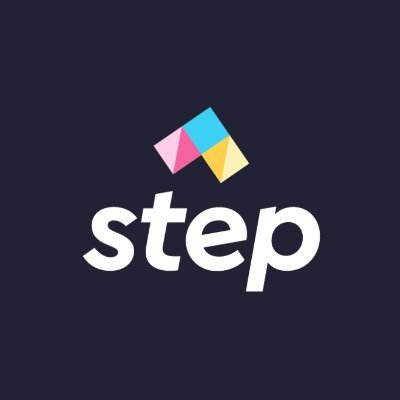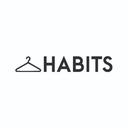
Introduction
StepN, a leading X to Earn (X2E) project, has been one of the hottest market focus in this Spring. There are also various new start-ups saying they are somehow “X to Earn”, making the concept widely spread with lots of discussions.
In this article, the author will illustrate:
- What is the essence of X2E?
- What is an ideal “X” scenario, and what is not? Why?
- What is the growth pattern of X2E? Is it a pure Ponzi scheme?
- What are the main challenges faced by X2E projects now?
Key Points
- X2E is essentially a new growth model for Web3 projects: Scenario X is the core, while “to Earn”(the economic model) is desiged to serve the X.
- An ideal X-scenario has two key requirements: Quantifiable behavioral outcomes, positive values provided to the public. Move, Read, Learn, and Play are four X scenarios that satisfy these requirements.
- The rapid growth in the early stage of X2E is destined to be unsustainable. With the investment return rate for uses gradually decreasing, the project token’s price will inevitably fall back to its intrinsic value. However, after this return of fair value, the retained and new users are project senarios’ real target users, and the project may have a second growth curve.
- The two major challenges of X2E are: Delicate design of the economic model, Network effects and barrier building after the return of fair value.
1. The essence of X2E: a growth model for projects
X to Earn(or X2E) refers to a type of projects that require users to purchase project NFT as an initial investment, and then obtain token returns through the “X” behavior encouraged by the project . (If you are not familiar with X to Earn, you can read some introduction and research about StepN, which is currently the most famous X to Earn project.)
It can also be seen from the above description that X to Earn itself is not an independent web3 sector, but a growth model that serves the project, a way for projects to attract new users and expand.
Before discussing the growth model of web3, let’s take a look at the growth model of many Web2 Internet Companies that people are more familiar with: As shown in the figure below,

- After a significant amount of financing, the project expands rapidly by subsidizing its users aggressively. For example, Uber may give new users many coupons or discounts that make the service more attractive in the growth period.
- In the meantime, More user data can also be collected, which helps the product managers and data scientists make the product more perfect.
- The network effect and the barriers of product are gradually built through this process, which make the product gradually outstanding from other competitors. This distinction will make new users more likely to choose the product versus the competitors.
Uber, Shopee, Didi, etc. are all Internet companies that follow this kind of strategy. Projects in their same sectors would have disappeared from the public’s attention without such radical expansion.
As the next generation of the Internet, Web3 can be more aggressive than Web2 in terms of growth: As shown in the figure below,

- Web3 projects generally conduct less rounds of private financing, but raise money from the public earlier.
- In the early stage when the product is still under development, projects often make NFT or token airdrops to attract its seed users, as well as attract more project builders - they may join the team, help promote the project, or just offer some advise.
- With the growth of community, people who think this project is promising start to buy tokens and NFTs, pushing up their prices; As investors, those people will also help promote the project.
- The price increase and the promotions of early users and investors attract more attention, thereby gaining more users and builders.
This growth model is also known as the “Growth Flywheel” of Web3 , and many successful DeFi products follow this growth model.
X to Earn, has made a further step on the above-mentioned Web3 growth model: Every user of the product also becomes an investor, and can get investment returns directly through the use of product. This greatly speeds up the rotation of the “growth flywheel”, thus making projects expand at a much faster rate in the early process.
Why the above discussions about growth model is important for the discussions of X to Earn? Because only after we understand the essence of X to Earn as a growth model, can our thinking not be limited to the recent over-focus on “Ponzi”(The “Earn” Part). We should put our attentions back to “X”: What does the project itself do? What kind of value does it provide to users?
After all, I firmly believes that a truly Web3 project must meet the real requirements of users. And only such a project can go further throught the market cycle, become a meaningful part when Web3 matures.
2. X in X2E: Two Key Requirements of an Ideal X
In a broad sense, all types of user factor inputs that bring economic returns (Earn) can be counted as “X”, so this “X” can be either capital or labor. But in fact, when people currently talk about various X to Earn, in most cases, the capital-type “X” scenarios such as “Stake to Earn” are excluded by default. Here are the reasons: On the one hand, they have existed before and have been discussed and studied; On the other hand, as capital games, they naturally hinder the entry and participation of the public, lacking the room for more imagination.
Therefore, the “X” in this article mainly focuses on the input of labor factors - Scenarios that require users to spend time and do a certain amount of “labor”. But even with such a limitation, there are still plenty of X to Earn projects on the market: Play to Earn, Move to Earn, Bike to Earn, Learn to Earn, Drive to Earn, Sleep to Earn, Eat to Earn, Read to Earn, Write to Earn, Code to Earn, Create to Earn, Sing to Earn, Meditate to Earn, Sex to Earn… Under the brainstorm of Web3 builders, All the scenes in people’s daily life seem to have the potential to be develped into “X to Earn” projects.
So, which scenarios are promising “X” and which scenarios are not ? After deep research, I conclude that an ideal X needs to meet the following two requirements: Quantifiable behavioral outcomes, and positive values provided to the public. The absence of any requirement will make it quite difficult to develop a project.
2.1 Key Requirement 1: Quantifiable behavioral outcomes
Since the input of labor factor X is directly related to the economic return, if this kind of input is difficult to be quantified explicitly, it will bring great difficulties to the design of the economic model. Even if some rough mechanisms are designed, they will also face a lot of anti-cheating problems, making the project’s economic system collapse.
In fact, if we think deeply about various X to Earn scenarios, this requirement is enough to filter out most projects.
For example, for many daily-life X senarios, the “outcomes of X behavior” are difficult to quantify:
- Poppin, an Eat to Earn project, where users can feed pets in the virtual world by eating food in the real world, thereby improving their combat power to earn tokens. The more food the user eats, the faster the pet grows. However, how to measure how much a user eats is a big problem. The draft plan of the team is to identify it by taking pictures - Obviously it is an impractical plan, because there is no way to judge whether the user actually eats the food or not just based on the food photos; In addition, how to detect the amount of food from the photo is also a problem.
- SEXN, a Sex to Earn project, where users can earn tokens through various sexual behaviors and corresponding NFTs. This idea looks funny and interesting at the first glance, so it has been widely spread to many communities. However, after researching its white paper, I find that the project team also have difficulties in how to quantify “sexual behavior” : Their solution idea is to make judgements by detecting body data(like heart rate) through sensors, but the specific plan is not revealed to the public. However, it seems difficult to separate sexual activity from other strenuous exercise only by body data. If the judgement were made depend on photos or even videos, it would raise even more serious issues of pornography and privacy. In a nutshell, If the problem of quantifying “sexual behavior” is not properly addressed, then the project may only stop at the stage of a funny idea.
Besides, the behavior outcomes of many “professional” X senarios also have the problem to be quantify directly. Other users’ feedbacks are always needed for this kind of behavior. However, under the status quo when Web3 social network is still in its exploration stage, the attempts related to social network building is quite difficult.
- For example, Write to Earn projects try to use tokens to incentivize text creation such as article writing and Q&A. So how to numerically evaluate the quality of user’s writing? It is obviously unwise to judge only by the number of words. A better solution to rely on other users’ interactive behavior(forward, like, comment, etc.)
- In fact, many projects are trying this direction. CrypNote, a Web3 collaborative document project, is trying to develop a Q&A knowledge base system based on Write to Earn mechanism. But I have to say that this kind of project needs to go through a long period of exploration and have a tough time growing in the current Web3 environment.
2.2 Key Requirement 2: Positive values provided to the public
From the perspective of product growth, “to Earn” is only a means of Internet traffic attracting. If the product just focus on the economic model design of the project and ignore the value of the X scenario itself, it will inevitablely face a large amount of user loss when the “investment return rate” of the project goes down, making the product growth unsustainable and turning into a pure Ponzi.
In addition, the positive value the project brings to the public, is also the key to the product’s ability to attract more Web2 users. After all, the current user base of Web3 is still not large. The more entry of Web2 users not only implys more growth potential, but also means that there are more users attracted by the value of X senario rather than just the economic return.
So what positive value can X bring to users? As X is a labor factor, we can find that users mainly want to two things: Either the fun of “labor” itself, such as playing interesting games; Or the “labor” itself can bring a sense of achievement, such as sports, study, read, etc. The latter can even be turned into the former, when the user’s habits is cultivated by the project.
Here are the examples of projects lacking this requirement:
- Some “Play to Earn” are actually not playful at all but have a delicated economic model design to attract users who only want to earn money through the game playing. With the popularity of Axie Infinity, such projects have also flourished in the past year. But when more and more people are aware that no one really wants to play the game, they will withdraw from the game more earlier, causing the project’s economic system crashing. So over time, people gradually lose confidence in such projects, resulting in a faster collapse for them. Actually, these project have almost faded out of the public’s attention now.
- Another situation is that if the X behavior itself is too specialized or just a hobby, then its target user base will be limited by nature, thus encountering problems in providing a value to the “majority”. For example, Sing to Earn: It is true that some users have a hobby of singing, but it is just hobbies. Many people can read, exercise, or learn English for half an hour every day, while considering it as a good habit and get a sense of accomplishment. However, what about singing for half an hour every day? It seems to be acceptable for only a minority of people. This problem exists even if the frequency of singing is reduced. Considering the current user base of Web3, such projects may not be suitable at the time present. But in the future, as the penetration rate of Web3 continues to increase, their chance of success will also gradually increase.
2.3 Four Ideal X Senarios
After analyzing a series of unideal X senarios, what senarios can have the above two key requirements at the same time? I think the answers are the following four senarios: Move, Play, Learn, Read. The following detailed analysis will be carried out together with specific projects.
2.3.1 Move to Earn
Walk to Earn, Jog to Earn, Run to earn, Bike to Earn, Fit to Earn …… These “X to Earn” projects can all be categorized into “Move to Earn”. They are the ideal balance of the above two key requirements: They are both easily getting quantified and bringing positive value for users – Helping them improve their physical and mental condition through sports, even cultivating their sports habits in the long run. Therefore, it is no surprise that “Move to Earn” projects grow faster than other “X to Earn” projects in today’s market.
To further analyze the value of Move to Earn projects, we can actually use the gym membership in the real world as an analogy: Many people go to the gym and pay for a time period of membership. Actually, one of the motivations behind the pay is to use the paid money to motivate themselves, like “In the future if I don’t go to the gym, I will waste the money spent, so I will go more often”. For some people this kind of incentive is effective, but for others it is not that helpful - And their spent money become the gym’s profit. From this point of view, Move to Earn is actually better in forms of economic incentivation. After all, you can get instant money rewards after each exercise, and you can further continue to earn more when your earnings have already covered your initial investment.
StepN is currently an X to Earn project with the largest user numbers now. Its core “labor input” X is running, which also proves the feasibility of Move to Earn. Many users may have bought NFT shoes and started running for money at the beginning; But as time goes by, their running habits begin to slowly develop, and they feel the good changes the habit brings to their life. At that time, the economic returns of StepN may not be the first thing they think about when they run. Although StepN itself has a lot of controversy due to a series of recent events, this does not hide the success of Move to Earn itself. Other projects similar to StepN, such as 5km and Step.app, are also constantly advancing and developing.
BikeRush is currently the leading project of Bike to Earn, with nearly 100k members in the discord community. Compared with running, cycling is not only a kind of exercise, but also has the value of saving carbon emissions as a substitution of vehicle. In consideration of the fact that only a propotion of people have a bike, Bikerush project team also supports running as an alternative to slow cycling. BikeRush’s beta version App have already launched.
Fit to Earn, is also a direction that I am optimistic about.
- In terms of bebavior quantification, the current open-source framework for AI key-point detection like Google Mediapipe can already be implemented on mobile phones, which makes it possible to quantify the results of fitness behaviors: Live video shooting by mobile phone + AI key-point detection to recognize the users’ movements such as squats, push-ups, dumbbells, etc.
- From the view of positive value provided to the public, fitness is undoubtedly an ideal scenario. Not only is the threshold for participation extremely low, but it can also help users lose fat and develop a daily habit of exercising . Although the current Fit to Earn projects are still in a early stage, such as Impakt and Fitcoco, these projects are worth following.
2.3.2 Read to Earn
Reading is also a scenario that can have quantified bahavior and positive values to the public: Web3 users usually see a lot of in-depth great articles when surfing the Internet, however, many of these articles may just be added to favorites but never be read again. Read to Earn can help users develop the habit of deep reading. Besides, the interaction between users and reading Apps can be clearly detected, so it is relatively easy for the quantification of reading.
In addition, the Chinese App Qutoutiao(Nasdaq: QTT) have explored many useful growth models for reference: Qutoutiao is a content aggregation App targeting users from small Chinese cities (third-tier and below) and rural areas, and its market value has once exceeded 10 billion US dollars. It is famous and controversial for its aggressive marketing expansion strategies such as users can earn money by reading articles. Although Qutoutiao almost failed now due to several reasons, it has paved the way for latecomers. New Read to Earn projects can learn from their market strategies and their anti-cheat system. Also, many of Qutoutiao’s team members have joined some Read to Earn startups, making them develop more quickly.
However, compared with Move to Earn, Read to Earn faces an additional challenge: The accumulation of the reading content. Although this can be solved through many ways , like media cooperation and creator incubation, it does bring certain difficulties to the initial development of the project.
ReadON, the winner of The Community Choice Award in Solana Riptide hackathon, is one of the promising Read to Earn projects. ReadON have a deep and mature thinking about future product development, including possible problems they may face and corresponding solutions. While its product is still under development, its Twitter followers have already reached 20k. Their development is worth tracking.
2.3.3 Learn to Earn
The value of Learn to Earn product is similar to that of Move to Earn: Many people will spend money on learning courses or paid content. In some senarios an implicit motivation for paying is to make the spent money an incentivation, especially when there are already many free related resources, like learning English or programming.
However, compared to Moving, the learning senario lacks in popularity. After all, no matter what to learn, there are only a small proportion of people who currently have that demand. Furthermore, learning is an activity requiring strong focus and willpower. These are the reasons why Learn to Earn projects’ growing speed are not as fast as Move to Earn.
LetMeSpeak, currently the top project of Learn to Earn, has 1 million Twitter followers. In LetMeSpeak, users can make money after purchasing NFT through various English learning behaviors in the App, including but not limited to memorizing words, doing grammar puzzles, and comprehensive speaking and writing in real-world senarios. However, as analyzed above, the proportion of people who really have a demand of English is not high. Taking a conversion rate into consideration, the actual number of real App users is only 10,000-20,000 (Estimated by the number of token holding addresses). However, it is worth mentioning that LetMeSpeak adopts a rather conservative growth strategy in the design of economic model, thus hindering the entry of players who just want to make money. So the App’s users are almost all real users who want to learn English, which helps the project to develop steadily.
Issues with economic models will be discussed further in the third part of this article.
2.3.4 Play to Earn
In my opinion, Play to Earn is fundamentally different from the above three scenarios in nature.
From the perspective of providing positive value to the public, games are not as “positive” as sports, learning, and reading. To be truly immersed in the game and enjoy the fun or sense of achievement, people need to spend quite a mount time in game learning, which becomes a threshold for many people who are busy with their daily work and life; In addition, “playing games is a waste of time” is a value judgement many people imperceptibly have, which makes them feel a strong sense of emptiness after game playing. Contrary to some game enthusiasts’ thinking, the combination of the aforementioned reasons makes game playing not that popular.
However, from the view of “quantifiable behavioral outcomes”, game playing is remarkable in comparison – After all, the game itself is a new virtual world. There are plenty of game behaviors that can make players happy, and these behaviors are also naturally easy to quantify. Besides, It is also much easier to design anti-cheating mechanisms in the virtual world than in the real world.
Play to Earn is a hot topic in 2021, and there are already many research done on this topic, so I will not write more details about it in the article. In short, seeing that various AAA Gamefi projects continue to build and get financing, Play to Earn is still a sector worth following.

3. E of X2E: A Growth Model for Radical Expansion
3.1 Typical development path of X2E projects
the “E”, the economic model design of “X to Earn”, is essentially to serve the growth of “X”. The following graph drawn by FMResearch shows a typical growth path for X to Earn projects:

- In the early stage, the project often has a high investment return rate and gives users an expectation of a short payback period, thereby attracting users to make an investment and carry out X activities.
- With the passage of time, the return rate must gradually decrease. Otherwise, to cover the earnings of previous users, a exponentially growth of new users is required, which is obviously impossible in the long run. Projects at this stage may show features of Ponzi schemes - Pays profits to earlier users with money from new users.
- After the decrease of return rate, users who only want to make money will quit the project, while others will stay because of the positive value (fun & sense of achievement) that the project provide. The network effects and the maturity of product may be the reasons why these people do not transfer to a new similar project.
- When the project can attract users with low or even no economic incentives, then it can start “a second growth curve”. At this time, it can make profits through other business models, making up for the deficit in the previous economic model and even realizing net profits.
3.2 Growth period: Three design ideas for the current X2E project economic model
So, how should the economic model be designed in the first growth period of X to Earn? How to achieve a higher user retention rate? How to balance the ratio of new and old users, so that the project does not grow too fast? These are all the puzzles that the X to Earn projects are still exploring and trying to answer. This topic may worth another long research article.
Here I will introduce three “cliques” of economic model designs I observed: (When you see the following descriptions like “conservative”, please note that X to Earn itself is already an extremely radical expansion strategy.)
- “Conservatives”: Represented by LetMeSpeak, whose main idea is to acquire more core users that can be retained in the future in the initial growth stage. In specific designs, such projects often do not welcome users who just want to make money. For example, LetMeSpeak requires users to spend time on completing English learning tasks, and the learning time can only be allocated to one NFT rather than share by various NFTs. This strategy is relatively conservative and makes the growth relavantly stable, but it can not draw enough attention from the public.
- “Balancer”: Represented by StepN, whose main idea is to make full use of the advantages of the first grow stage and to make this stage as longer as possible. This requires a delicate design of the economic model, and sometimes the num eric details of the model like NFT mint price and token rewards may be changed often to balance the ecosystem. “Balancers” does not exclude the users who just want to make money at first, but try to convert them into real users. To become a successful “Balancer”, the project need to have a deep understanding of the economic system, and be capable of controling the economic system over time; in
- “Radicals”: Represented by various scam-like projects, which are typically characterized by an absurdly high initial yields rate. To be honest, it is difficult for such projects to have long-term development prospects. Due to such a high return rate, the number of users who purely want to make money will far exceed the number of target users of the scenario; In reality, these project teams often RUG, selling all their tokens or NFTs and causing their prices to plummet, while participants get no money back. These X to Earn projects can be recognized as true Ponzi schemes.
3.3 The Period of Fair Value Return: Not Necessarily a Death Spiral
After the extremely aggressive and unsustainable expansion of the initial grwoth stage, X to Earn projects will always go through a process “fair value returning”. At this time, the retained and newly added users are the real target users of the project scenario.
Take Play to Earn’s well-known project Axie Infinity as an example, the price of its governance token AXS has dropped from the highest point of 160U to 17.8U, a drop of nearly 90%. Although this decline is very scary at first glance, there are still new players for Axie: For those who really want to try the game, it is a proper time to enter now. On the other hand, we have to see that AXS still has a circulating market value of 1 billion US dollars. Think deeper: If Axie didn’t use X to Earn growth model and just relied on its Pokemon-like gameplay, would you ever have a chance to even know the project’s name in today’s extremely competitive game market?
Some people will describe this return of fair value as a “death spiral”, but I don’t fully agree with this - because “Death Spiral” is more often used to describe the extremely rapid zero-going process of tokens, such like LUNA. The process of fair value returning is comparatively slow, and not necessarily zero-going.
3.4 After Fair Value Return: Network Effects and New Business Models
No matter how much money the Web2 Apps “burn” for expansion, they achieve their goals of accumulating users, building network effects and product barriers. In the end, those Web2 projects will always make profits. From this perspective, X to Earn projects in Web3 are no exceptions. However, the current problem is that how to build such network effects and product barriers is still being explored in Web3.
If the project fails to build those thing after the initial growth stage, it is doubtful that users will stay in the project: Why don’t they go to other similar emerging projects to enjoy a higher “investment return rate”? For example, 5km is an emerging Move to Earn project, and its economic model design is almost the same as the initial model of StepN. If the investment return rate of StepN starts to decline, even if users have a habit of running, why don’t they quit StepN and participate in 5km? In fact, this is a serious question many projects still remain to answer, like how to build network effects in Move to Earn senarios? In this point, Read to Earn projects may have the potentil to go further because the network effect building of reading is relavantly clear.
Besides the network effects and traffic monetization, another way for project to make profits is to turn the “investment” into “consumption”. A typical example is Play to Earn: When some enthusiastic players buy advanced equipment, skins and other game props, they are really immersed in the game and enjoy through consumption; For Move to Earn and Learn to Earn, some peole may invest in the NFT but do not have enough willpower to do sports or learning - And those people’s investment can be regarded as consumption in some ways.
Since most X to Earn projects are still in their early stages of development, we often see the broad imaginations about this part in projects’ roadmap. I am looking forward to Web3 project which have a sustainable business model, instead of staying in the initial stage of Ponzi-like growth.
4. Summary: Challenges and Prospects of X2E
The essence of X to Earn is an emerging Web3 growth model. Scenario “X” is the foundation, while the economic model about “E” refers to the initial radical growth of the project. After this growth, projects will go through a return of fair value, and those who have a sustainable growth model and real value to users can go further.
After the previous analysis, I concludes that X to Earn is still in the exploratory stage. X to Earn now mainly face two challenges:
- Delicate design of the economic model: The “conservative” design route is difficult to make community FOMO and get widespread attention; The “balanced” design route is like walking a tightrope, whose pioneer StepN is widely criticized by the community due to its frequent adjustment of mechanism design and centralized decision-making; The “radical” route is like a Ponzi scheme. How to reasonably balance the comprehensive factors in model design is a real challenge.
- Network effects and barrier building after the return of fair value: As mentioned before, if the project still does not have enough network effects and product barriers after the X to Earn growth, it may face further user loss and die. This is a problem faced by many Web3 projects.
In 2022, we have seen a trend of the blooming of X to Earn projects. Although we may see a lot of Ponzi schemes under the banner of “X to Earn”, it does not mean that there are no projects that really want to build a better Web3 through this growth model. With the exploration of Web3 builders, I believe that they will gradually find solutions for the challenge of X to Earn.
As X to Earn projects can attract many Web2 users to be Web3 newcomers, once there is a successful project that can actually do that, it will certainly become a monument in the history of Web3 development.
Reference
- FMResearch: Templates for X2earn | Frequency, Principal and Labor
- PAKA Labs: How to build a sustainable X to Earn economy
【免责声明】市场有风险,投资需谨慎。本文不构成投资建议,用户应考虑本文中的任何意见、观点或结论是否符合其特定状况。据此投资,责任自负。



























































